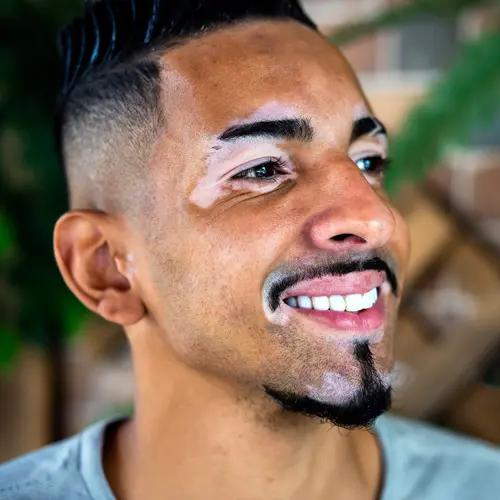Your skin might peel for lots of reasons, like when it’s really dry or sunburned. But when the skin peels on your fingers, it could be a sign of a more serious condition.
Here are some of the most common causes and how to treat them.
Hand Eczema
Hand eczema, also called hand dermatitis, usually affects people who work with their hands and touch chemicals all the time, like housekeepers, hairstylists, and mechanics.
Hand eczema can be genetic. That means if your parents or grandparents had it, you might get it. But it isn’t contagious. That means you can’t catch it or spread it to someone else.
Hand eczema may cause:
- Redness
- Itchiness
- Peeling skin
- Cracked skin
- Pain or discomfort
If you think you have it, see your doctor. They can help you figure out the cause, so you can try to stay away.
Your doctor might tell you to do these things every day:
- Wash your hands with lukewarm water and fragrance-free soap.
- Dry your hands well every time they get wet.
- Use moisturizer with a high oil content after you wash your hands.
- Use petroleum jelly and wear cotton gloves at night.
- Wear gloves during the day when you need to.
Try disposable food service gloves when cooking, vinyl gloves with cotton liners when doing work that gets your hands wet, and clean cotton gloves for other tasks.
If you have hand eczema, don’t:
- Use alcohol-based hand sanitizers. They’re tough on your skin.
- Wash dishes or laundry by hand.
- Wear rings when you wash your hands. They can trap moisture and irritants.
Learn more about how to care for hand eczema.
Dyshidrotic Eczema
Dyshidrotic eczema, a more serious type of hand eczema, can cause fluid-filled blisters on your palms, the sides of your fingers, and/or the soles of your feet. Your skin may feel like it burns.
Doctors don’t know what causes it, but you’re more likely to get it if you:
The blisters may take a few weeks to heal. It’s a long-term disease, so symptoms may be ongoing. Over time, your skin can harden or become red, scaly, and cracked.
If you think you have dyshidrotic eczema, talk to your doctor. They may send you to a dermatologist, a doctor who specializes in skin diseases.
To diagnose dyshidrotic eczema, the doctor might:
- Do a biopsy and take a small sample of skin.
- Do an allergy test on parts of your skin.
- Do a blood test to check for a rare autoimmune disorder.
Treatments for dyshidrotic eczema include:
- Moisturizers
- Anti-inflammatory ointments
- Oral steroids
Read more on dyshidrotic eczema symptoms, causes, and treatment.
Acral Peeling Skin Syndrome
Symptoms of this rare disease include painless peeling of the top layer of your skin. The condition usually begins at birth or during early childhood.
These things can make peeling skin syndrome worse:
- Heat
- Humidity
- Moisture
- Friction, like when your clothes rub up against your skin
The skin under what peels off may be red and itchy for a little while. View a slideshow to see photos of peeling skin syndrome and other uncommon skin conditions.
Psoriasis
Like eczema, psoriasis can cause redness, peeling, cracking, and even blisters. It looks like:
- Red patches with silver scales
- Small, scaly spots
- Cracked and dry skin
You also might have swollen or stiff joints.
Doctors don’t know what causes psoriasis, but they think it has something to do with your immune system. These things can trigger psoriasis:
- Infection
- A skin injury
- Stress
- Smoking
- Heavy drinking
- Not enough vitamin D
- Some medications, like beta-blockers and lithium
It can’t be cured, but your doctor can help you manage your symptoms.
They may prescribe topical medications like calcipotriene cream or corticosteroids to treat your psoriasis. If those don’t work, they may prescribe drugs that affect your immune system, like methotrexate or cyclosporine. Know more about treatments for psoriasis.
Contact Dermatitis
Contact dermatitis is a rash you get when you touch something you’re allergic to. For example, if you wear a ring made out of nickel and you have a nickel allergy, you may get a rash on your finger.
Symptoms of contact dermatitis may show up right away, or they make take a few days. The symptoms are:
- A red, itchy rash
- Cracked, scaly skin
- Blisters
- A burning sensation
- Swelling
- Tenderness
The rash isn’t life-threatening or contagious. Call your doctor if symptoms keep you awake. Also call your doctor if the rash is really big, on your face, or on private parts. Get more information about contact dermatitis causes, symptoms, and treatments.
Kawasaki Disease
This rare condition mainly affects children. Along with peeling fingertips (one of the later signs to show up), symptoms include:
- Rash
- High fever
- Swollen hands and feet
- Bloodshot eyes
- Swollen lymph nodes in the neck
- Irritation in the mouth and throat
The cause is unknown, and it’s not genetic or contagious. Most children make a full recovery in 10-14 days. It can cause long-term heart complications. Find out more on how to recognize symptoms of Kawasaki disease.

